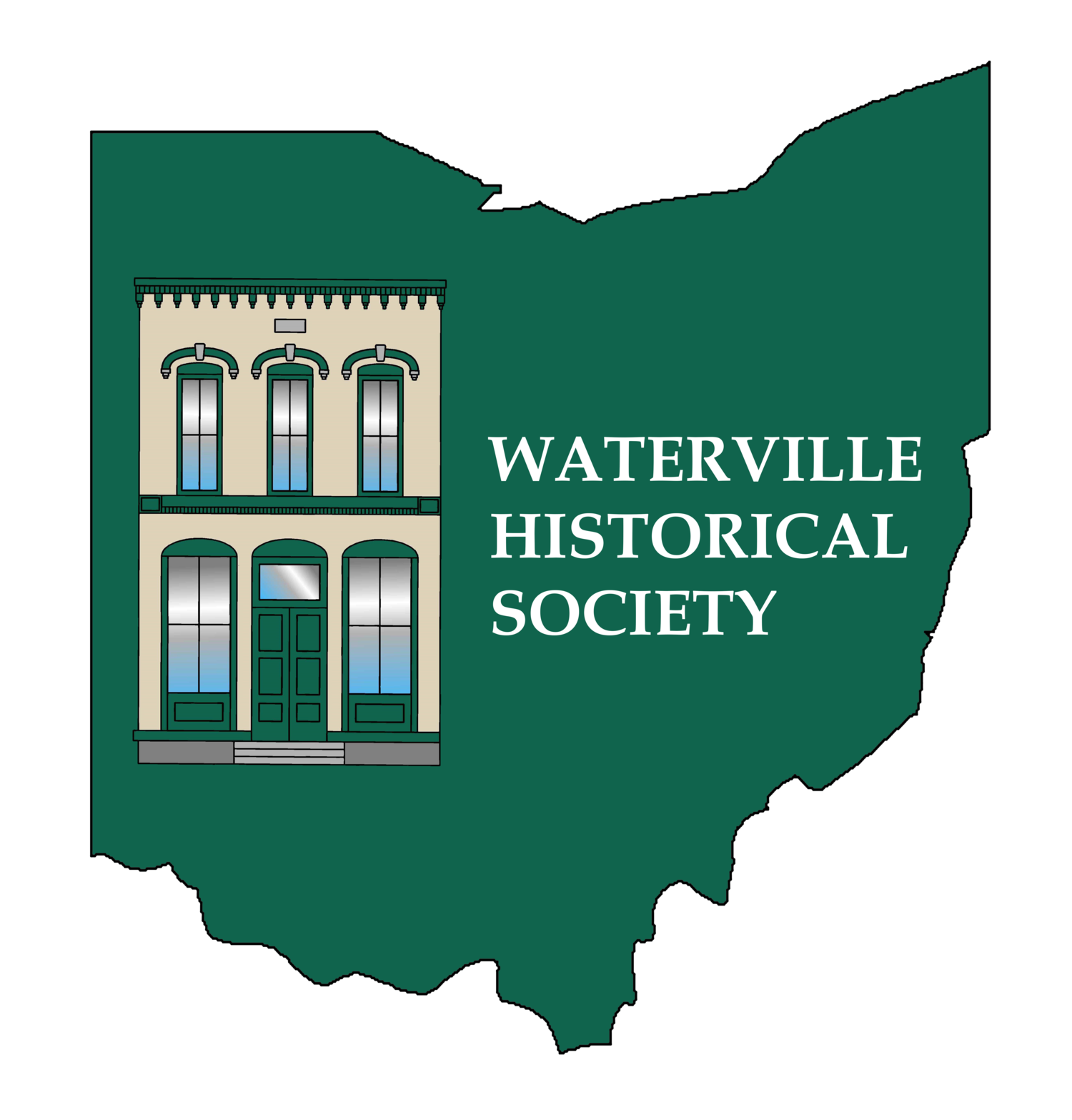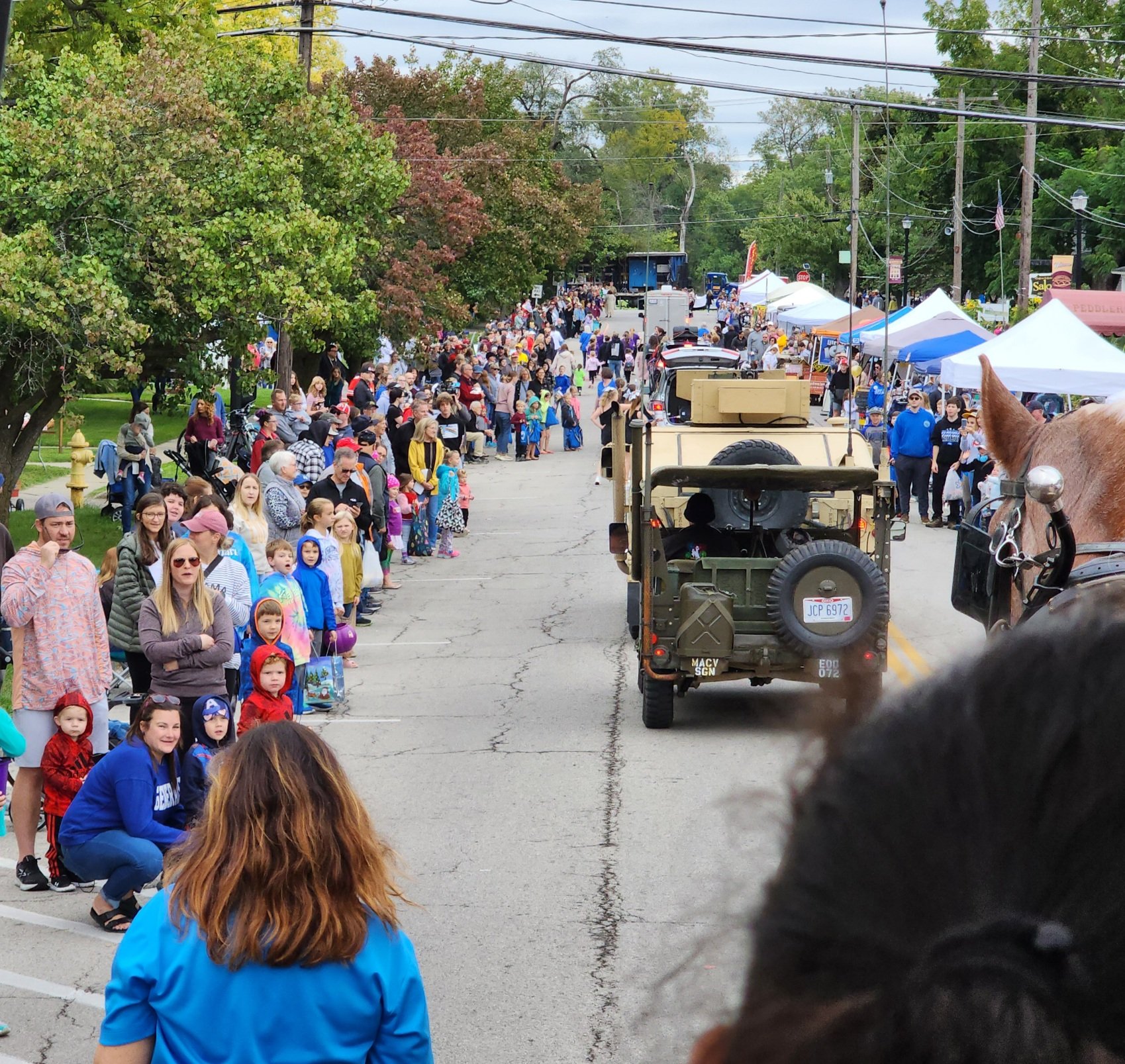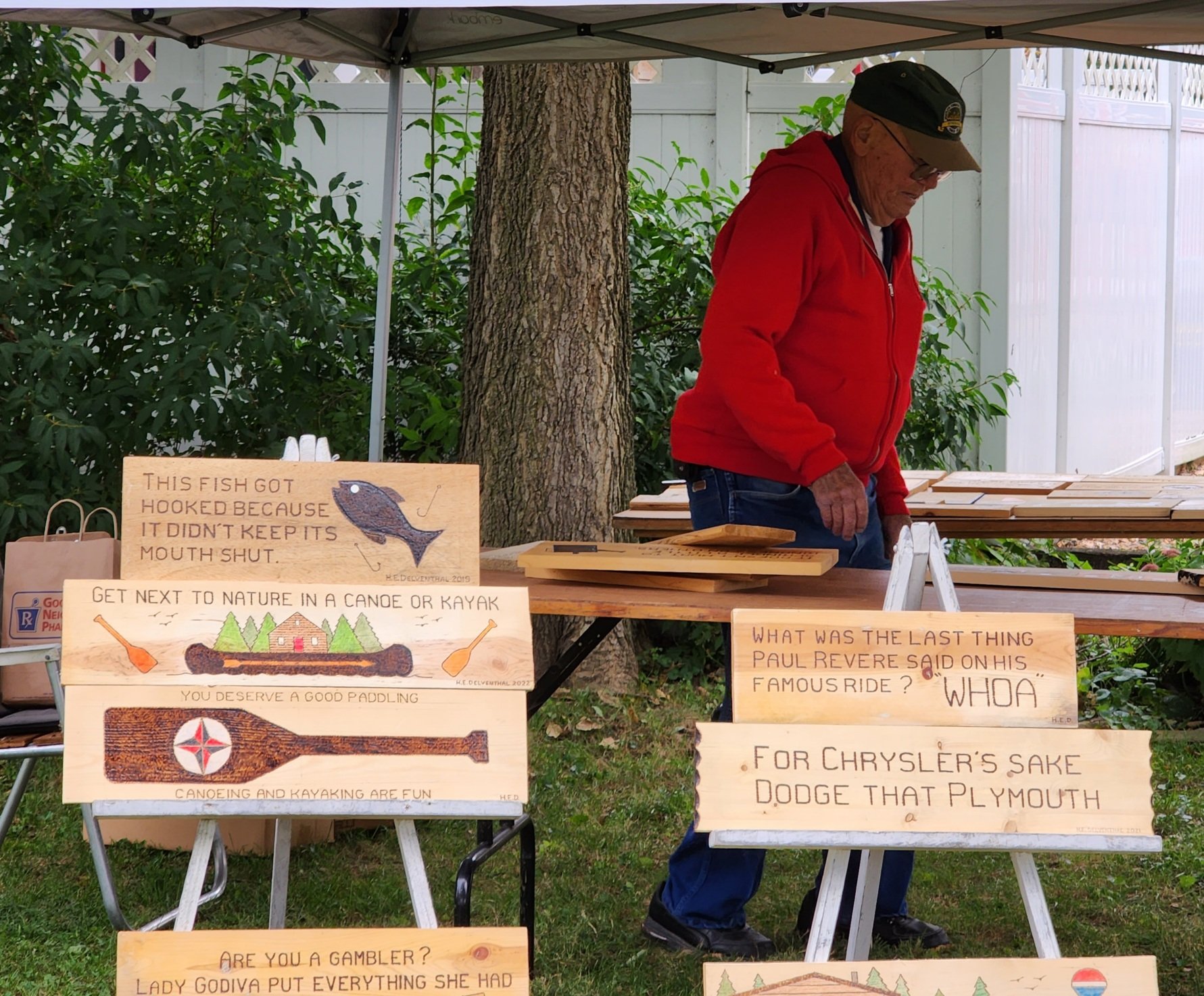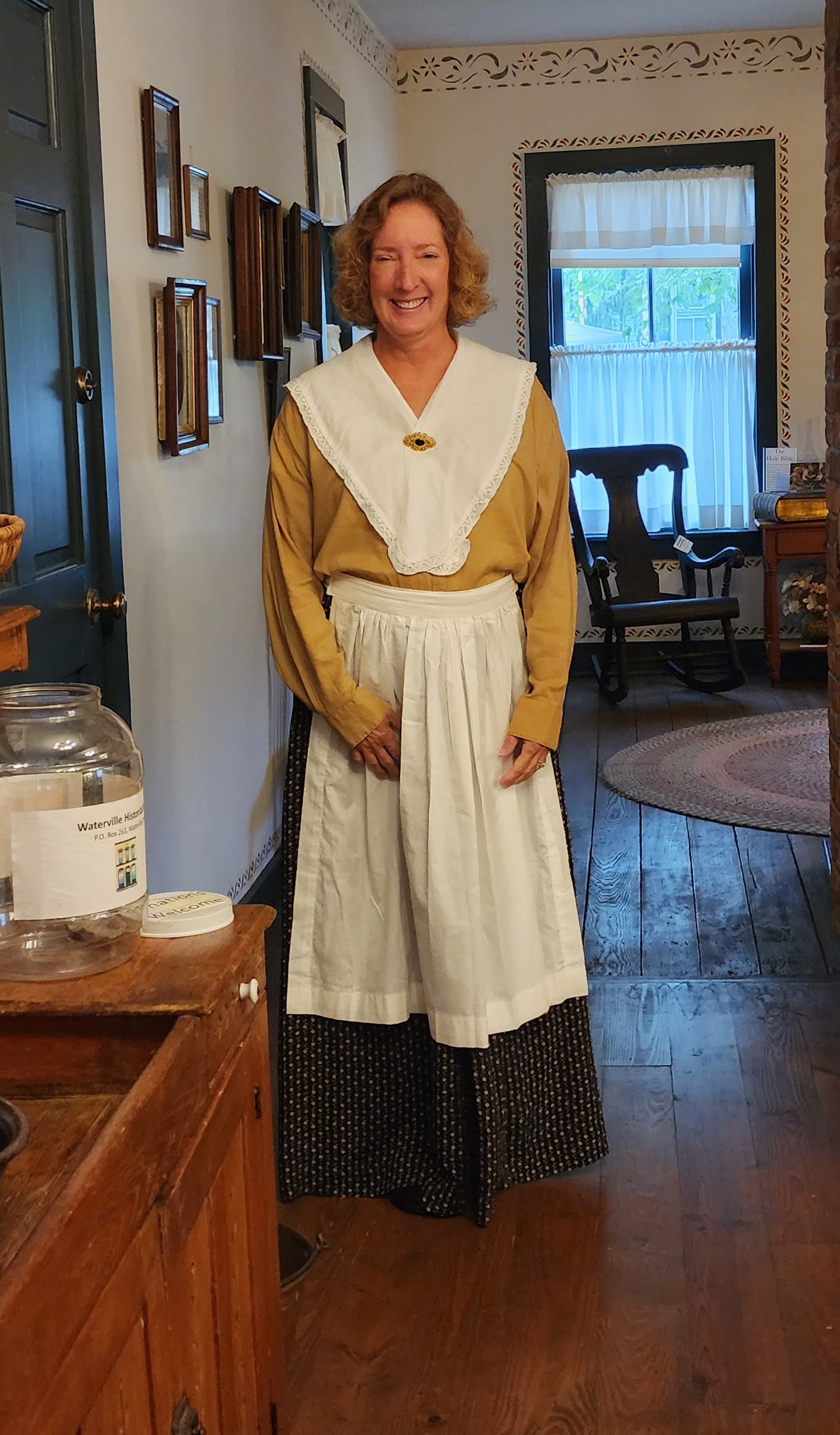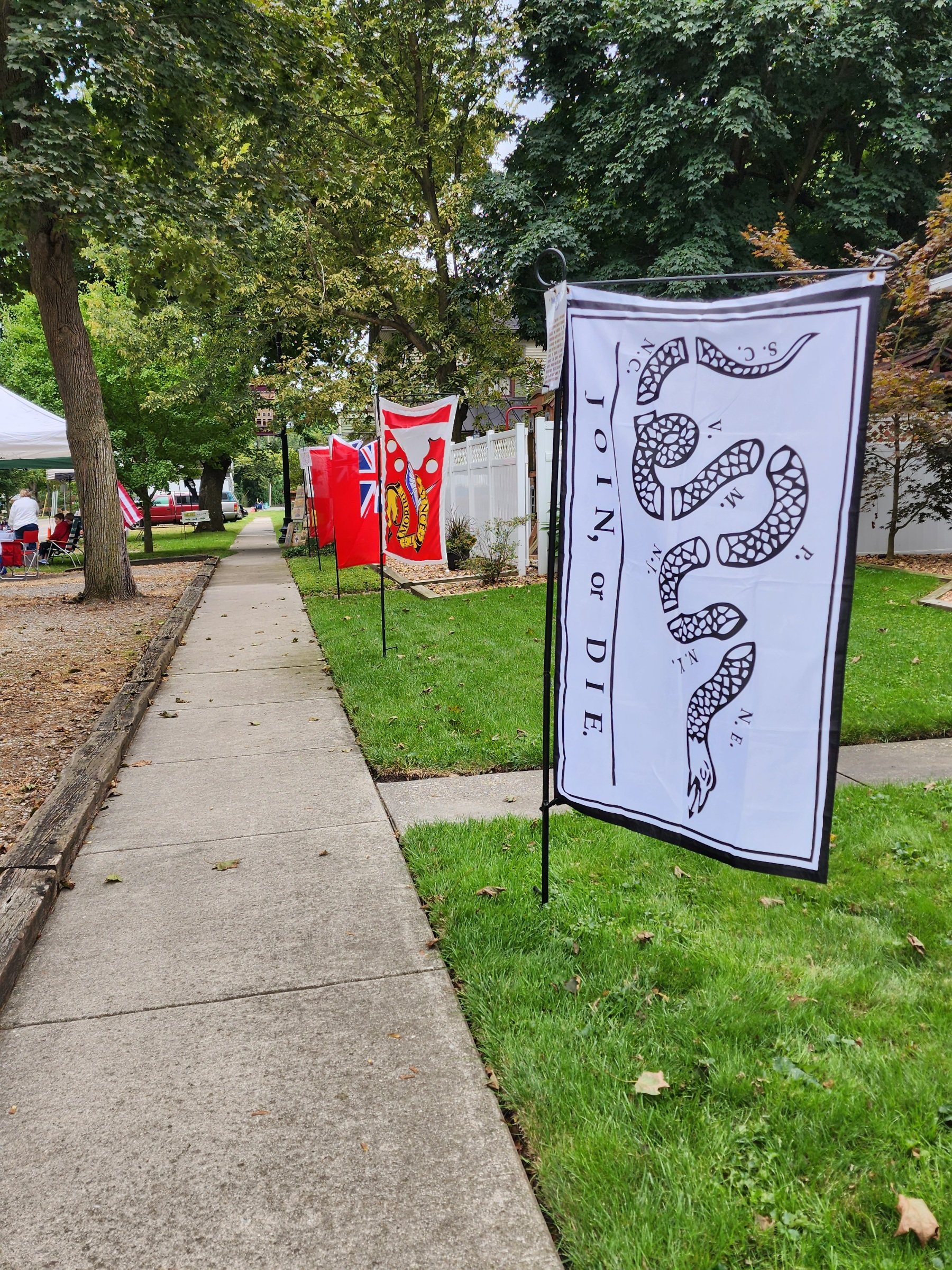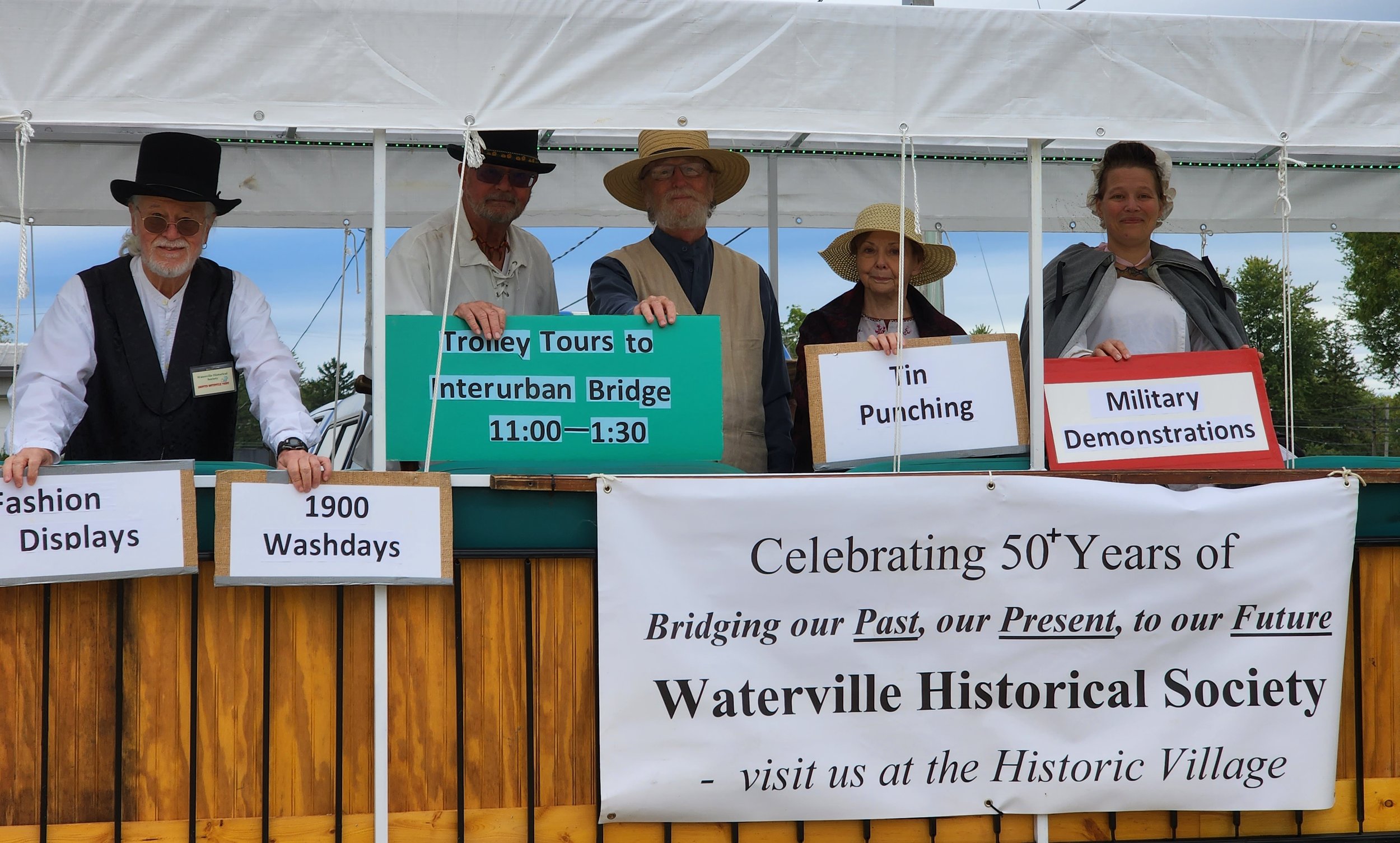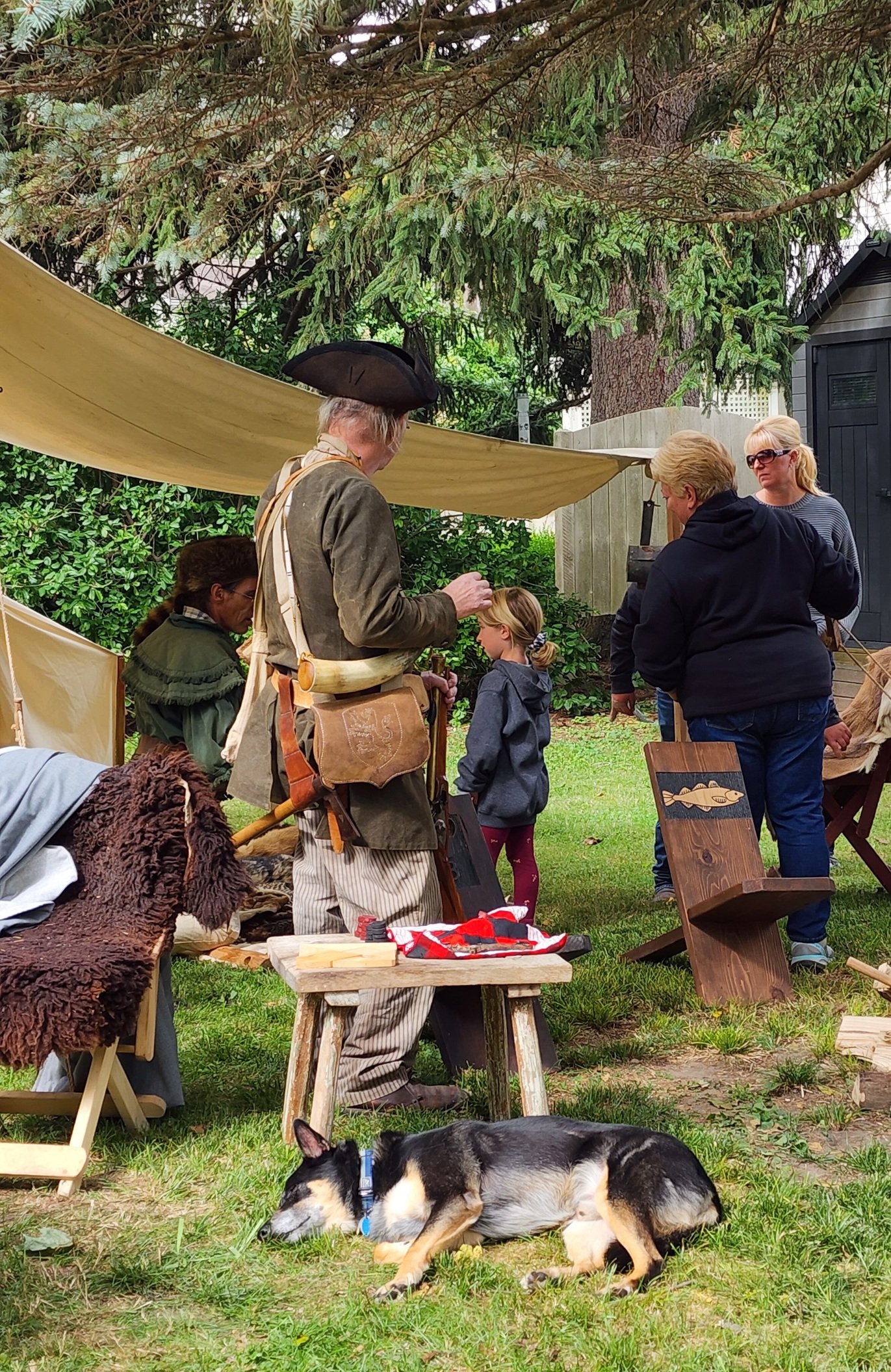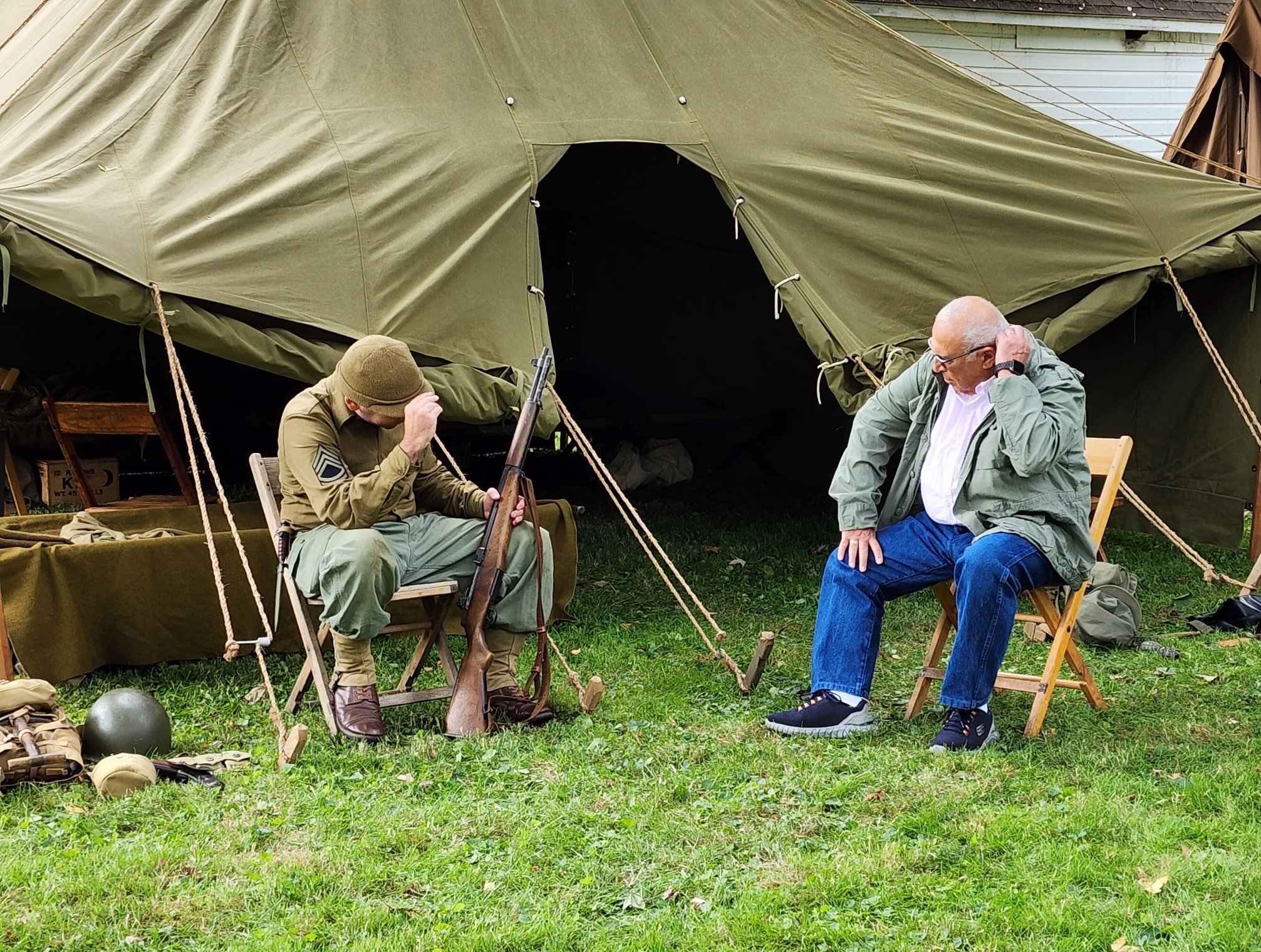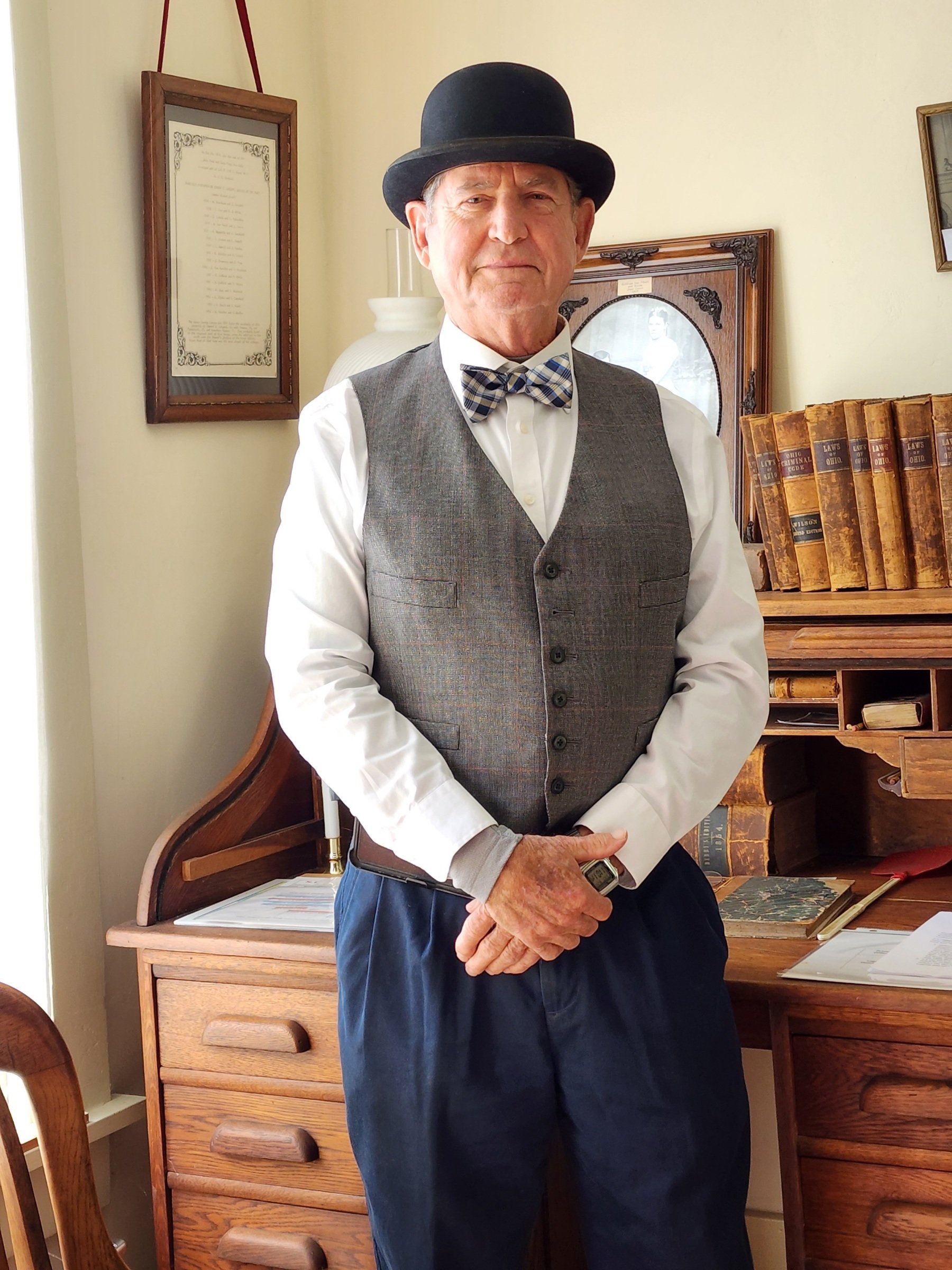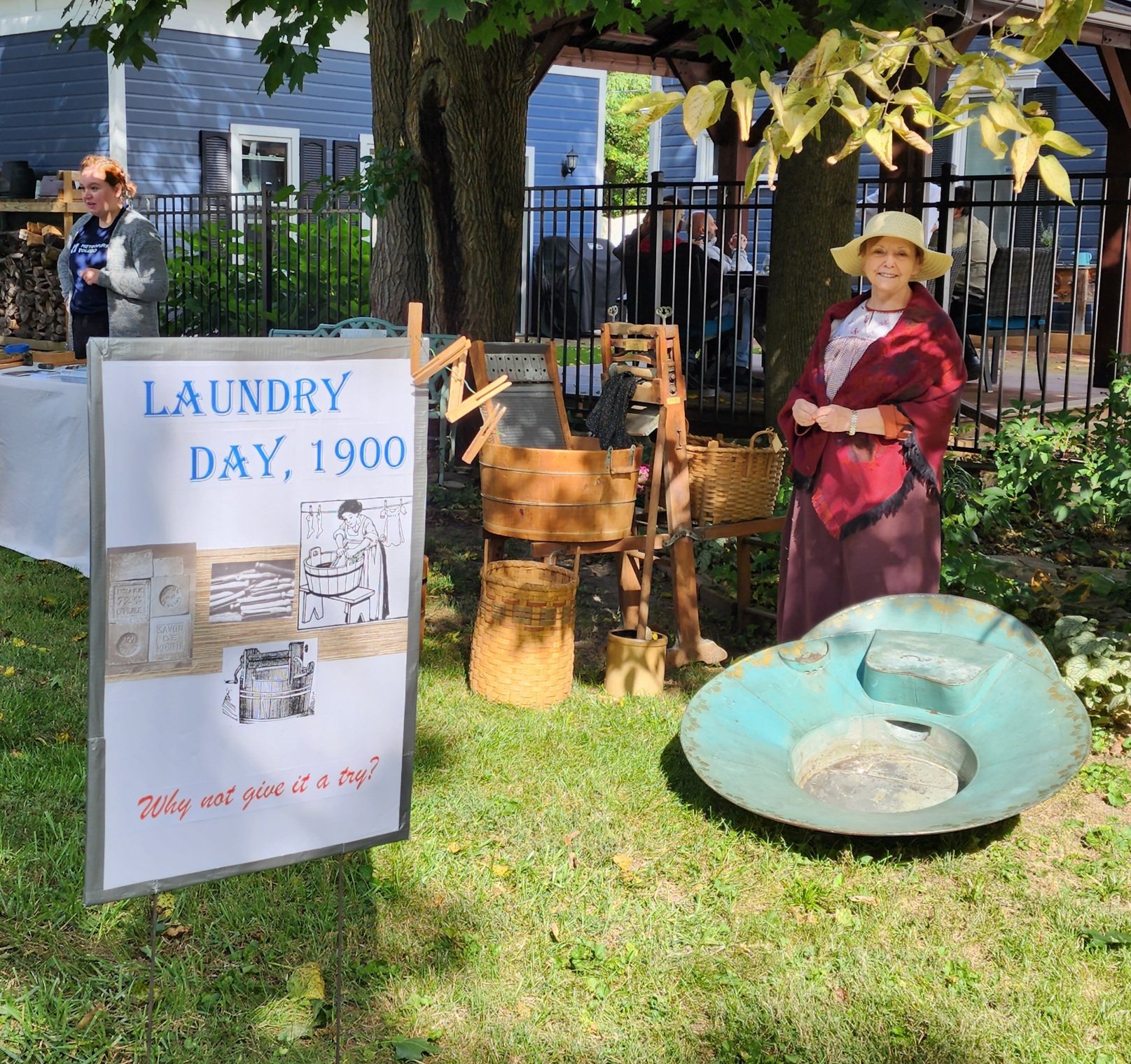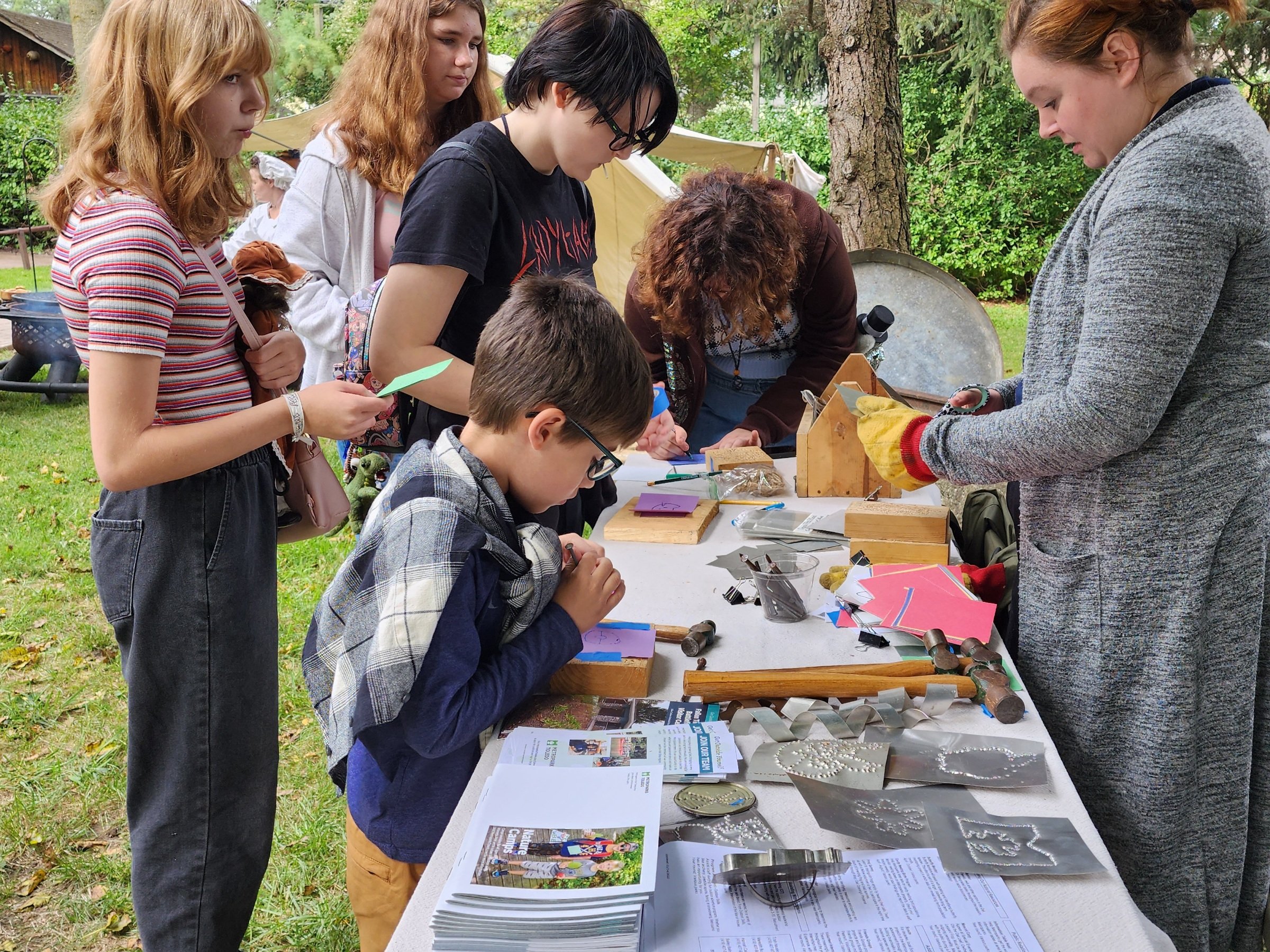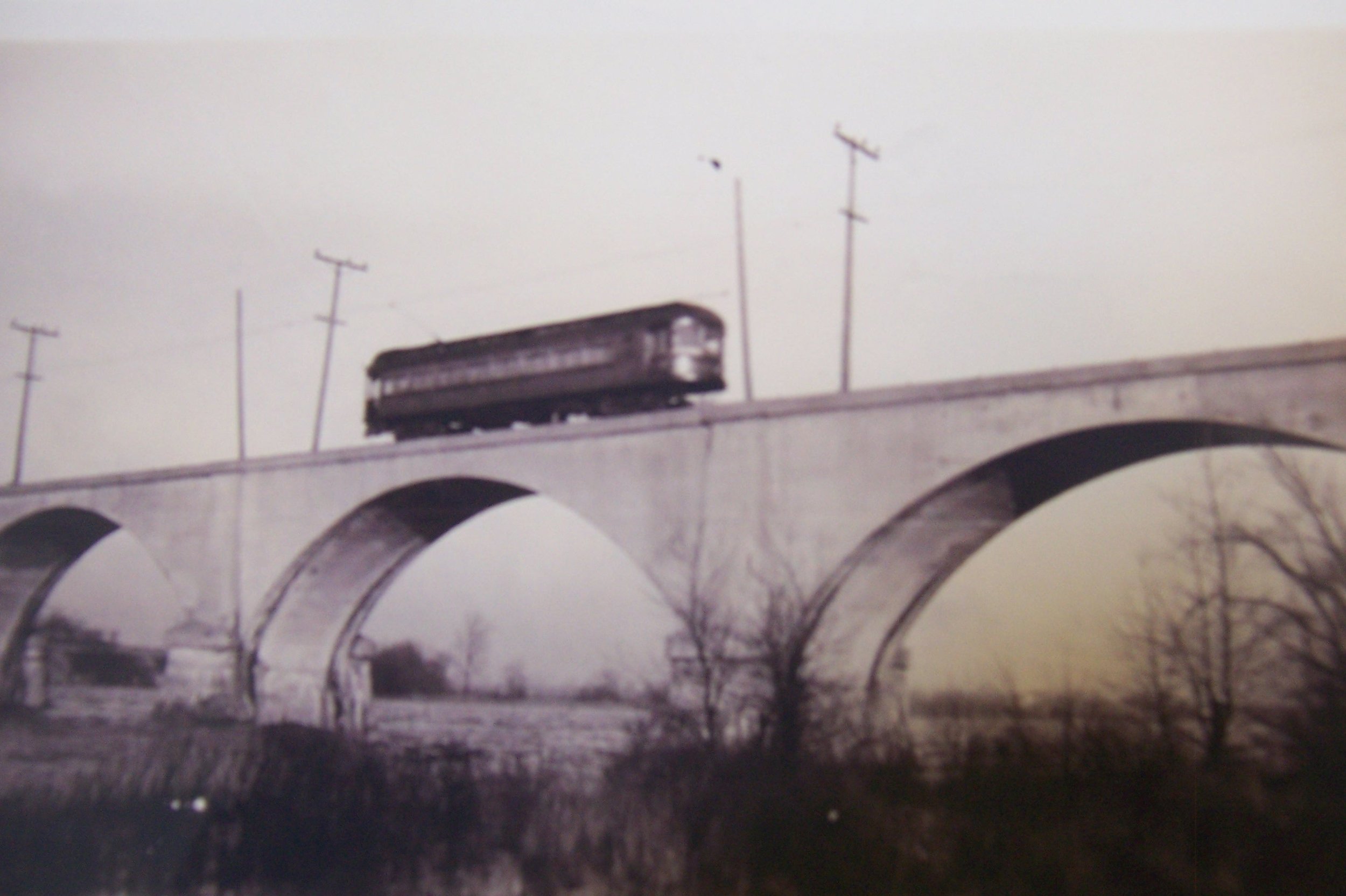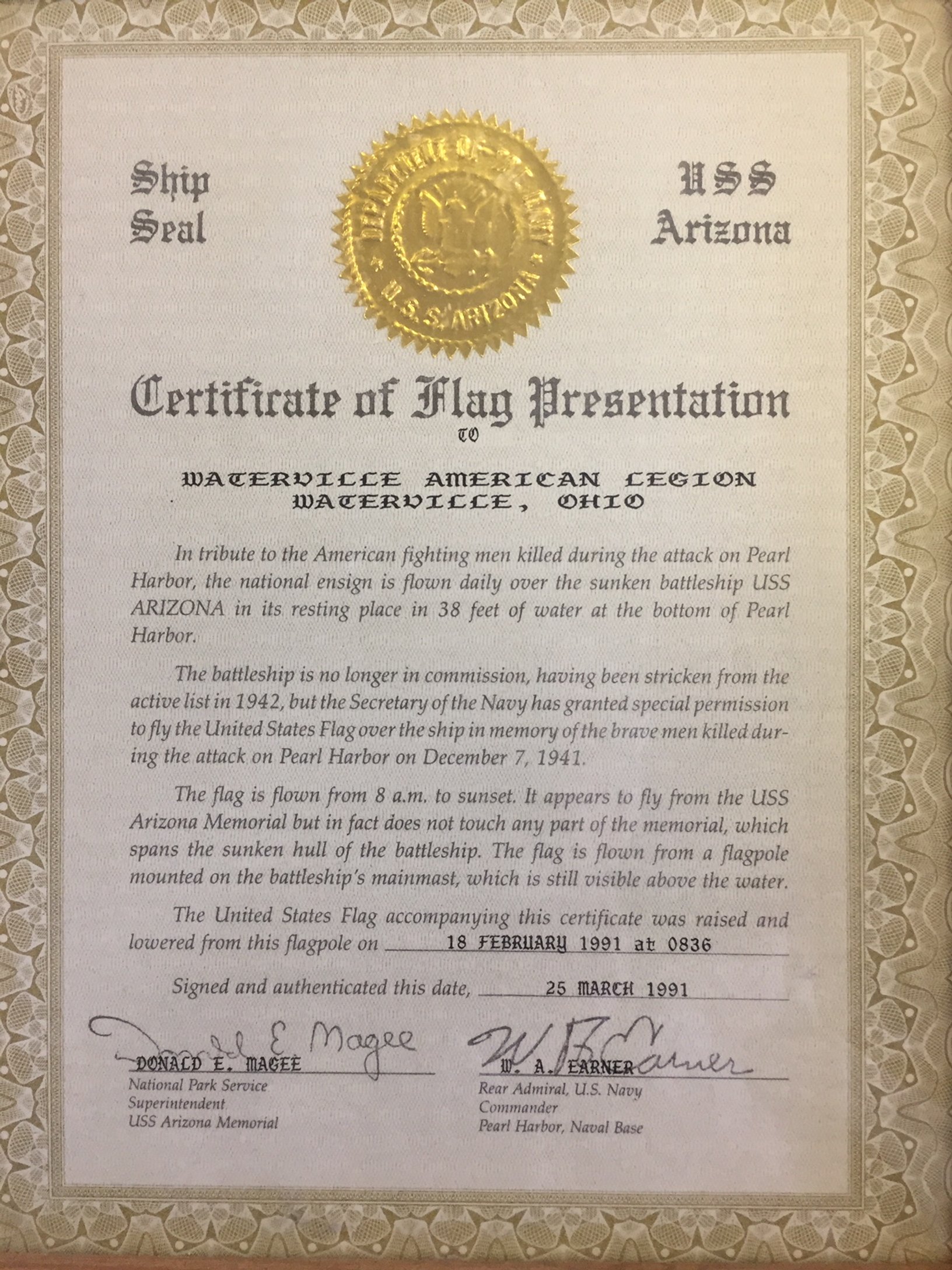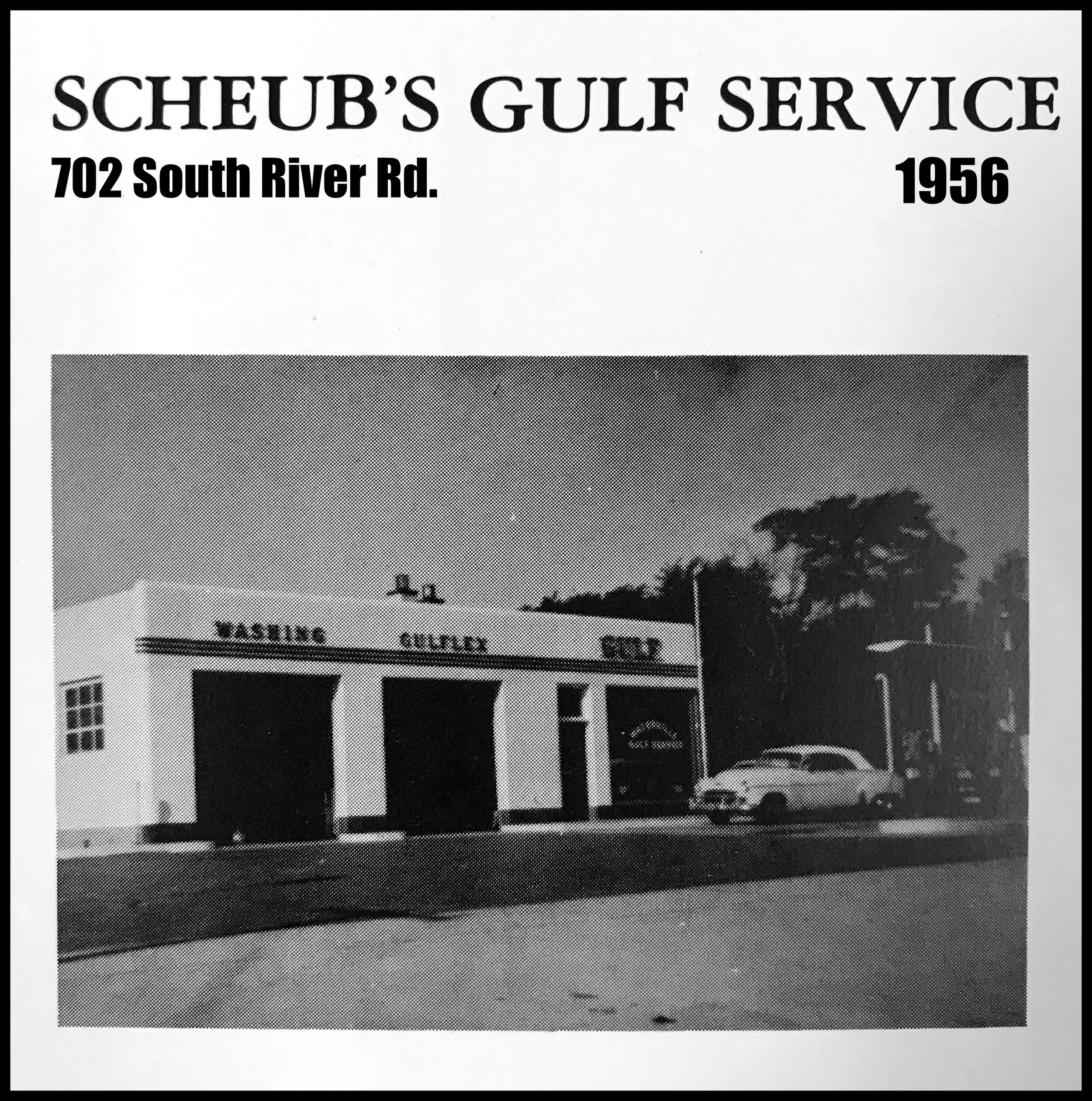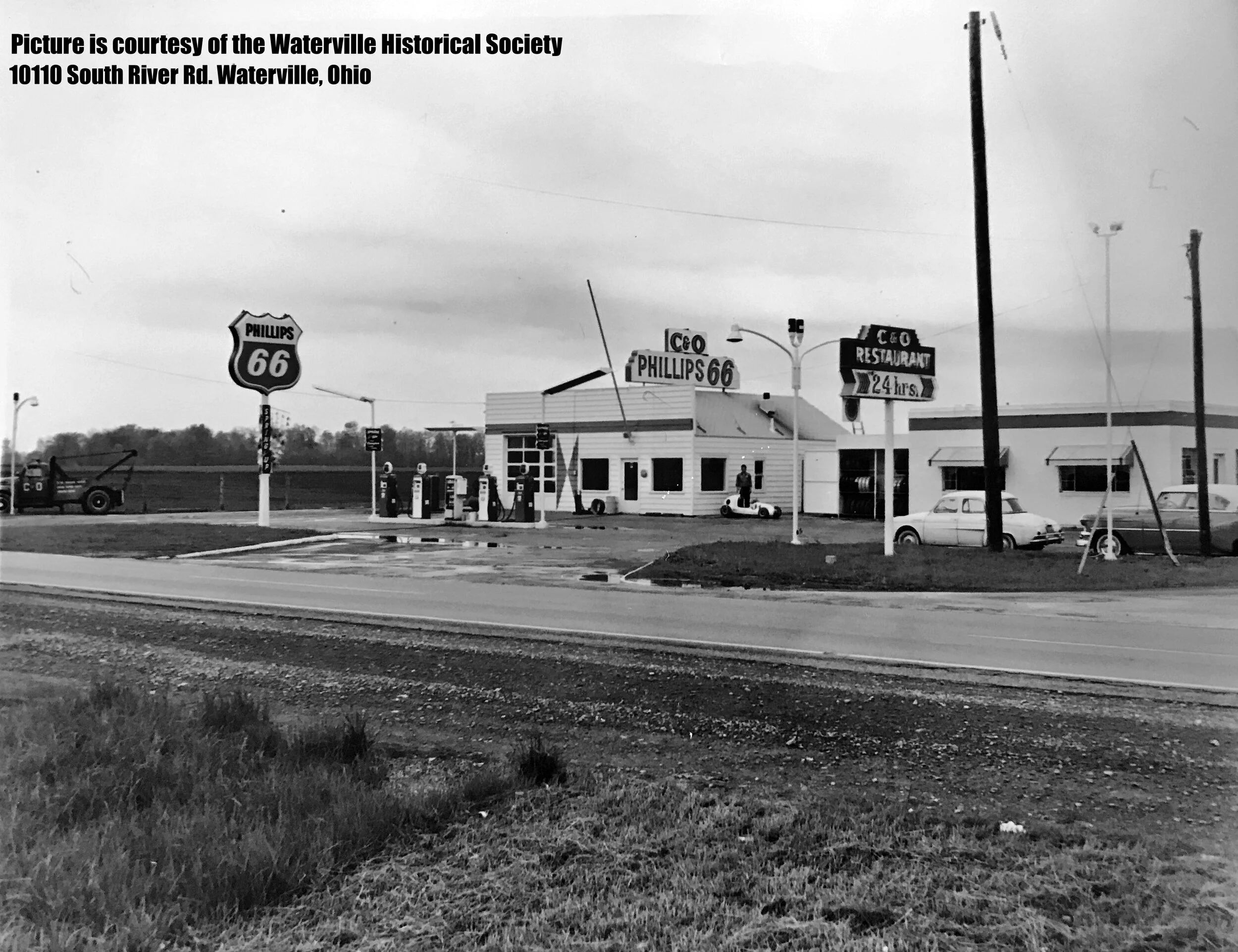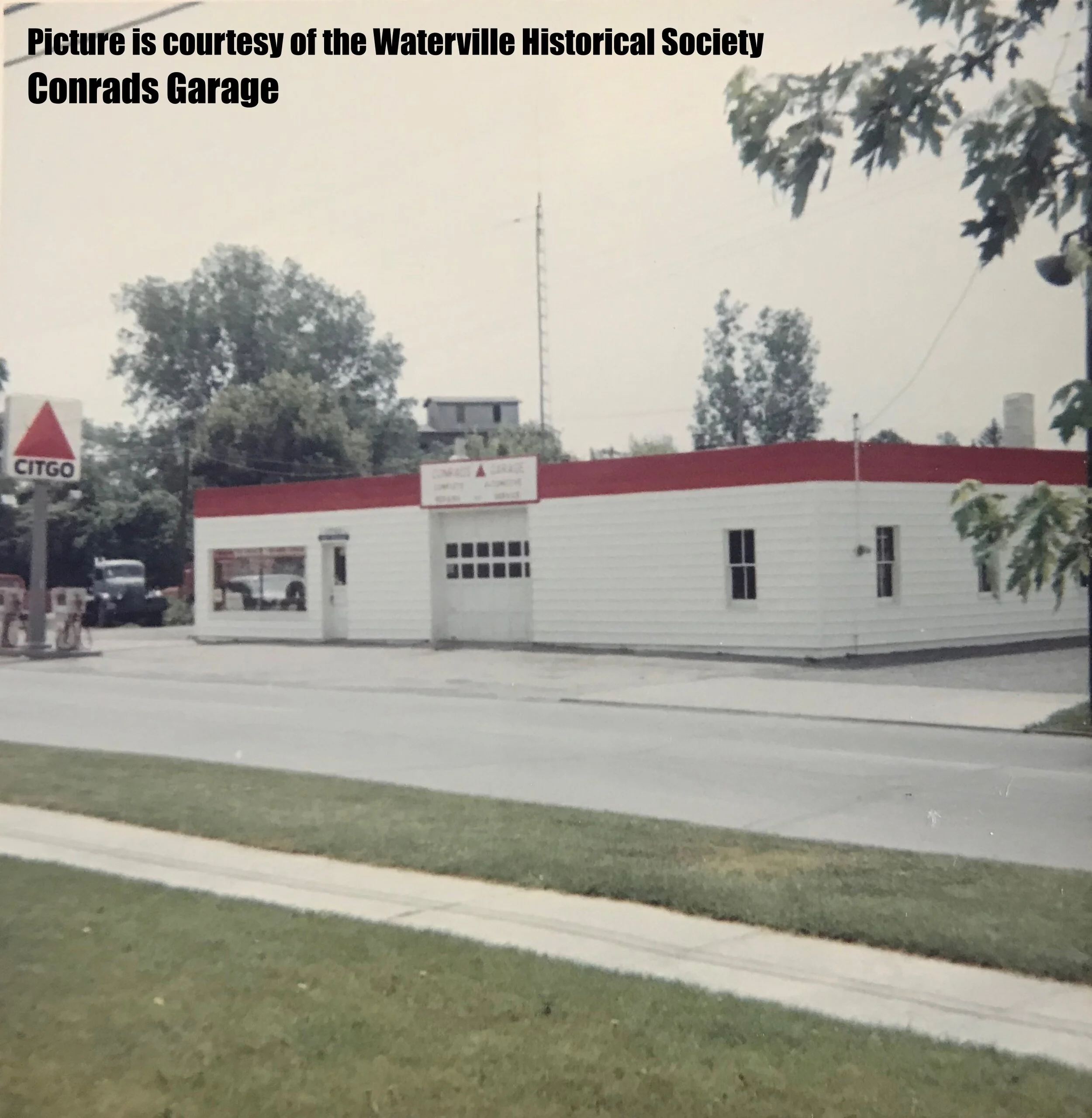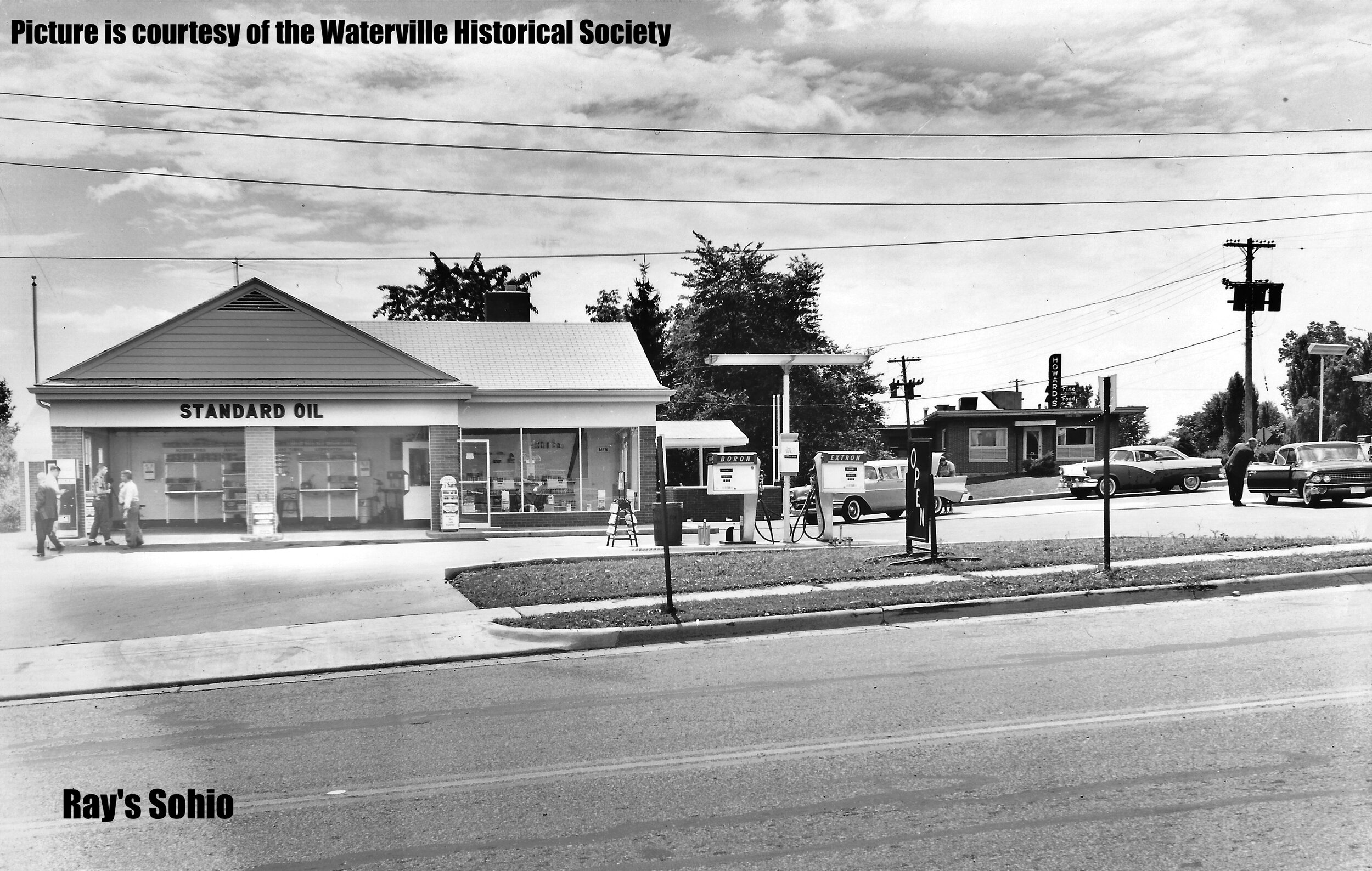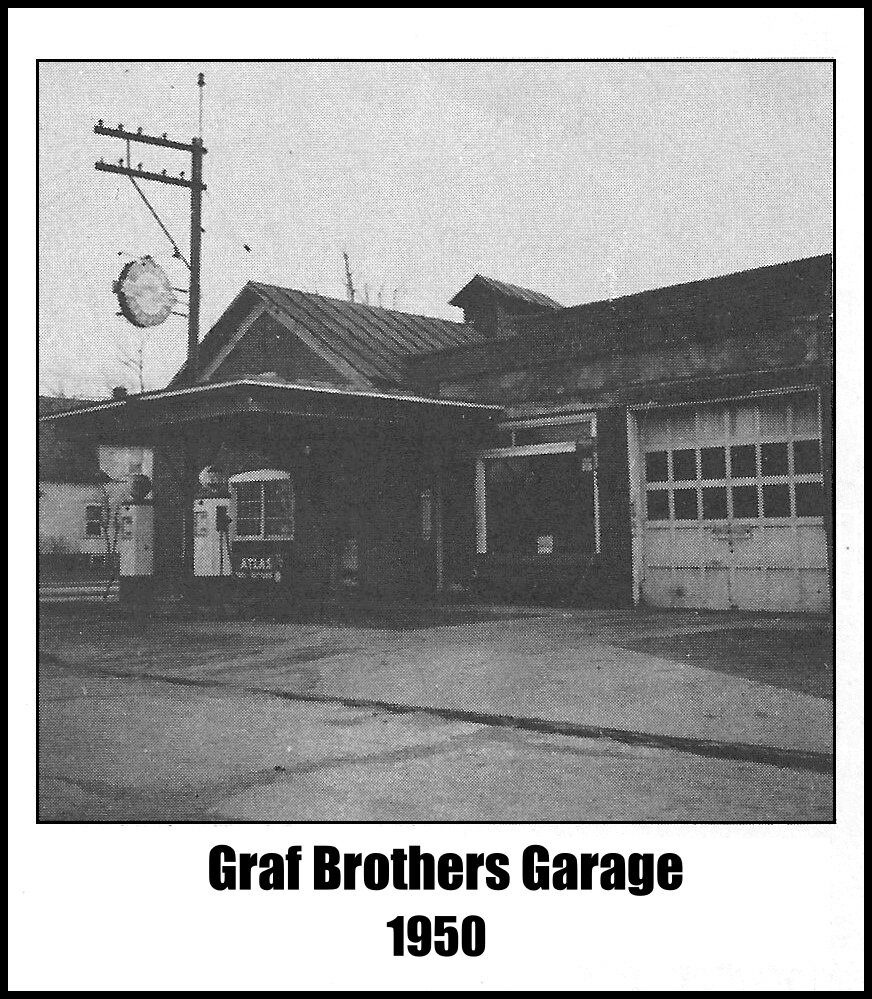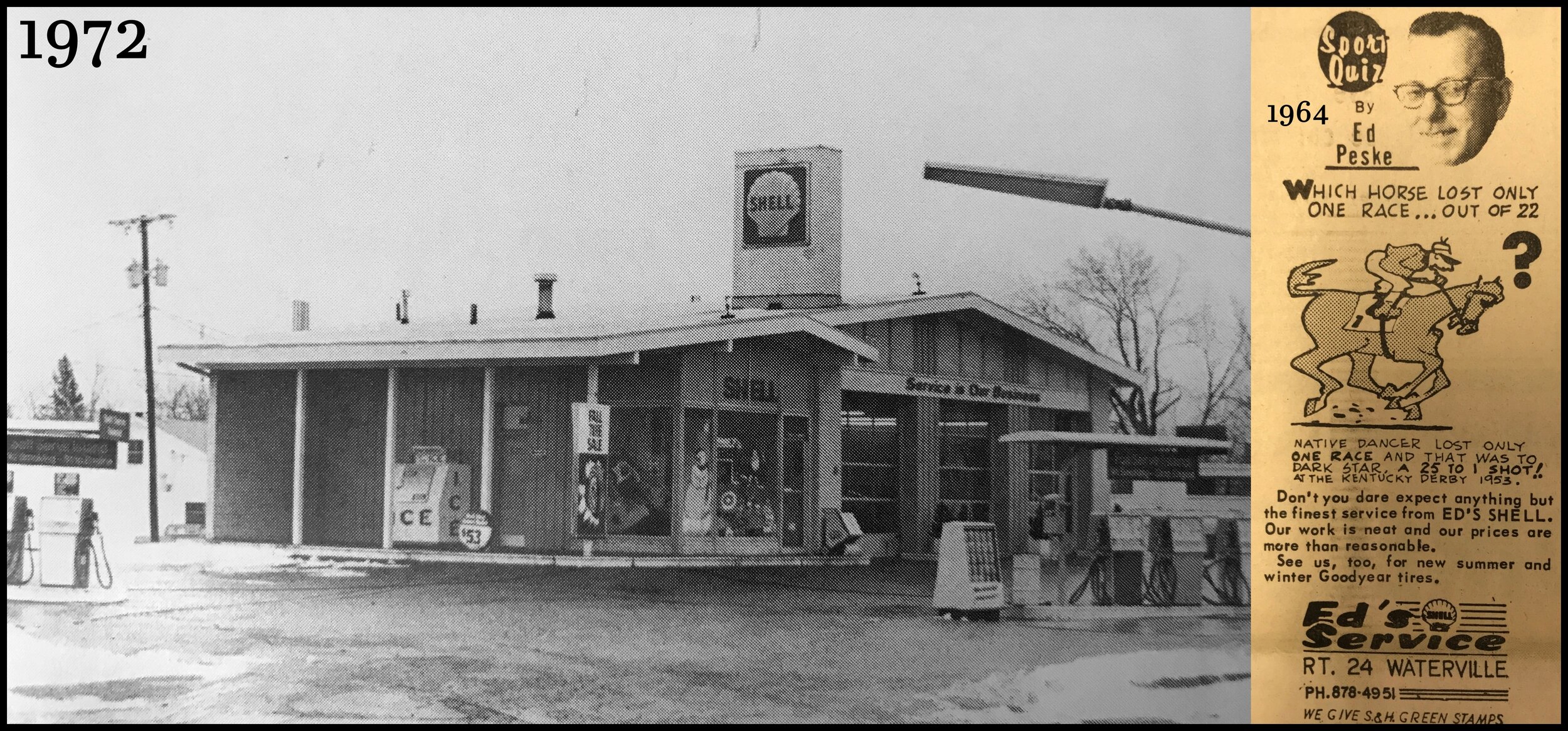Because of his love of history, because of his attention to authentic materials, and because of his artistic ability, Merle Wilhelm has brought back “The Cobbler Shop” on the Waterville Historical Society River Road campus. Mr. Wilhelm, a Waterville resident since 2008, renovated his own property and took on the Waterville Historical Society project because of his talent and interest in the creative process of woodworking.
“The Cobbler Shop” located behind the Robbins House Museum on the historical society’s South River Road campus, is a small, bright and red-orange building built circa 1905. In George Haley’s time the building was located on Farnsworth Road at the N.E. corner of the alley between 3rd and 2nd Street. It was later moved down the alley to the rear of the Henry Oliszewski property at 27 Second Street where it was repurposed as a shed or chicken coop. The building was moved to the historical society’s property in 1983. It has been used as an additional museum building until Merle took interest in the renovation project that transformed the entire structure. The building had been closed due to deteriorating conditions.
He has a respect for history, showing his attitude clearly with his experience with area reenacting groups. Merle says, “I got into reenacting in the late 1970’s, early 1980’s, when I joined The Toledo Muzzle Loaders. We did many rendezvous and reenactments. I made most of my own clothing and accoutrements. I remember when our group set up camp inside Greenfield Village. I demonstrated cooking venison on a spit over an open fire, and gave tomahawk and knife throwing demonstrations.”
Merle’s own property, built in 1907, is located across from the historical society campus. In his renovation of his own home and adding a barn and addition, he used original wood, windows, cabinets, and flooring in different ways. The materials in his home are authentic to not only Waterville, but also his property. He used the same thought process and righteous commitment to create The Cobbler Shop’s new look.
“The Cobbler Shop inside wood is recycled Barn siding that came from Antique Beams and Boards in Delta Ohio,“ Merle notes. “They planed the wood a little, and cut each board to 6” wide. I can’t tell you enough how great a job they did. The hanging electric lights I constructed using old antique shades, and one made out of an old farm funnel. The light switch is the old push button style they used in the early days. I replaced one window and sill that was rotted out. I found an old window in an antique shop, cleaned it up, and made a new frame for it.” The other two windows are original, he said,
His knack for using recycled wood, he says, he learned from his father. “When I was abought 10, my father would bring home huge pallets that glass was shipped in, he worked at Libby Owens Ford Glass factory on East Broadway in Toledo. My job was to take off all the iron straps, de-nail the boards and stack it. He built a pony shed with it, and other things. I just love the look of rustic pieces that I make, with no cost but labor. I still collect old wood and siding from my neighborhood.”
“I researched how to work with wood.” He read books and examined old pictures, and practiced with wooden joints to understand the feel and the process of woodworking art. The skilled tasks and the creative process combine for Merle into a very special calling.
Merle says, “I am in my own little world when I grab old wood and decide what I am going to do with it. It’s my happy place.” He notes that The Cobbler Shop project has provided him with a certain serenity. The work has helped him grieve for his wife, Lorinda, after her death in August of 2021.
Now, where there once was a 10 ½ by 14 ½ foot storage building, the Waterville Historical Society South River Road Campus has gained yet another museum. Neatly displayed and cataloged Inside The Cobbler Shop are leather-working tools, shoe forms, a whetstone, and a barrel which is set to hold an an antique checker board and checkers. There is a spot for a small woodburning stove as well.
The tidy but appealing little building already is in fact generating interest from the visitors to historical society events. At the most recent “Haunted Waterville” program, thirty people expressed interest in “The Cobbler Shop” and were shown the work and artifacts contained in it.
Merle is committed to helping others learn about the past. He says, “Historic wooden objects, and how to make them is a lost art. If I can share with others the talents that God has bestowed on me, it is my duty, and my joy (to do so). His efforts have added a new, artistic dimension to the Waterville Historical Society, but the whole community will benefit from his vision.
